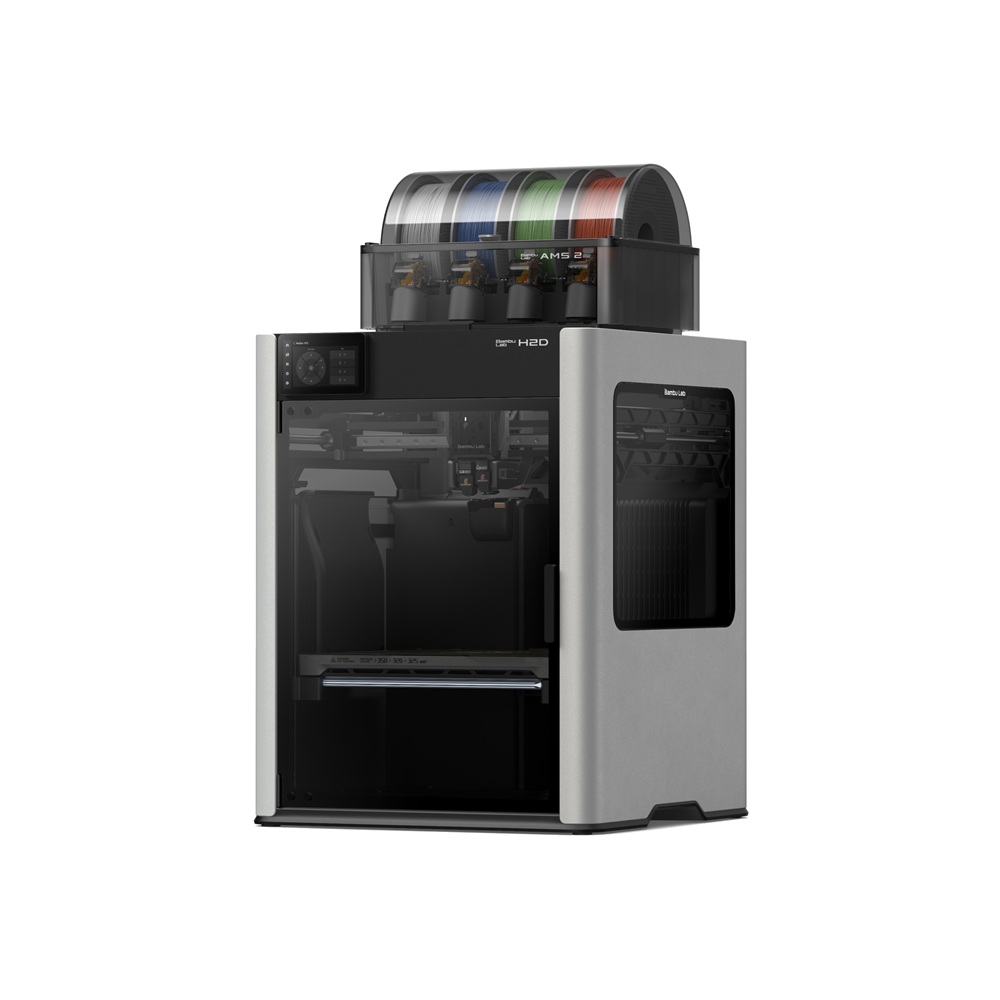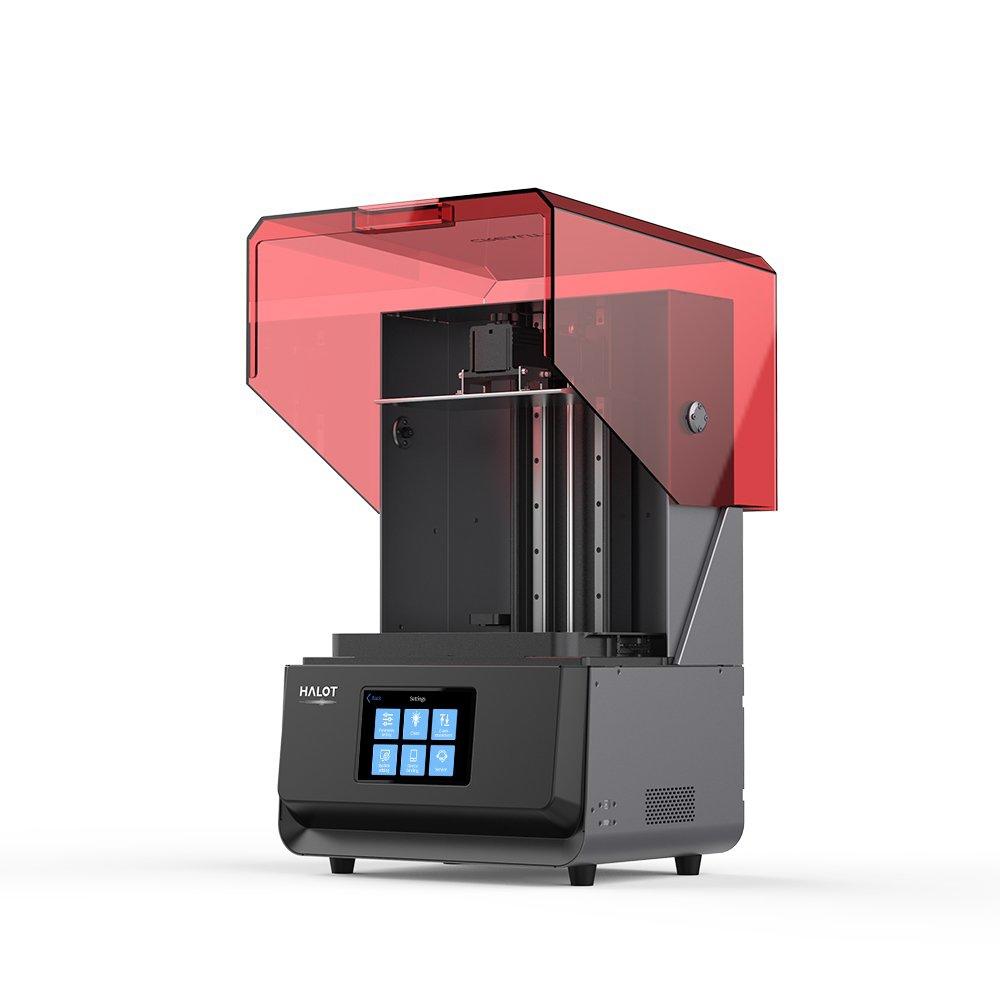Compare H2D vs Halot Max
Comparison between the best 3D printers
Choose the best 3D printer at the best price. The cheapest 3D printers are here.
Buy a 3D printer here with 3D Fila.
 |
 |
|
| Model | H2D |
Halot Max[BUY Halot Max] |
| Printing Material | Filament | Resin |
| Buy Filament for Bambu Lab H2D | Buy Resin forCreality 3D Halot Max | |
| Estimated price | $1899,00 | $3000,00 |
| Manufacturer | Bambu Lab | Creality 3D |
| Release Year | 2025 | 2021 |
| Print Volume [mm] | 350x320x325 | 293x165x300 |
| Printer Size [mm] | 492x514x626 | 480x387x770 |
| Weight [kg] | 42,3 | 32,5 |
| Power Loss Recovery | YES | NO |
| Maximum Resolution [mm] | 0,01 | 0,03 |
| Processor | ||
| Display | Touchscreen 5'' | Display touchscreen 5'' |
| Power Supply | ||
| Connectivity | Wifi, Bambu bus, Cartão SD | SD / USB / Wi-Fi |
| Operating systems | Windows, Mac, Linux | Windows, Mac, Linux |
| Date of registration in the system | 2025-03-31 | 2022-11-04 |
| Release date | 2025 | 2021 |
| Extra features | Bambu Labs H2D combines high-speed 3D printing with a chamber heated up to 65 °C, dual extrusion with automatic nozzle switching, an AMS for filament drying and exchange, and AI sensors that detect failures. It offers optional laser and digital cutting capabilities, features intelligent calibration through computer vision, vibration control, enhanced fire safety, and real-time camera monitoring. | The Halot Max printer stands out for its large print size (293 x 165 x 300 mm) and uses SLA technology. It has an integral light source for improved accuracy and a strong core with an advanced operating system. Its Z-axis module ensures high precision, supported by efficient slicing software. The machine offers online OTA updates and boasts an adjustable layer thickness between 10 and 200 microns. Its XY-axis resolution is 3840*2160, with 0.05 mm accuracy, and an integral 405nm light source. The printer includes a 5" touchscreen and multiple connectivity options, such as USB, Creality Cloud, and HALOT BOX WiFi. With cutting-edge technology, the Halot Max is ideal for printing small models with uniform precision, thanks to its self-developed lighting system and stable printing mechanism, which includes dual linear guides, ball screws, and an intelligent brake system. |
| Support for multiple colors and materials (AMS and CFS) | YES | NO |
Notes * |
||
| Cost-benefit | 7 / 10 | 5 / 10 |
| Hardware | 8 / 10 | 1.2 / 10 |
| Tela | . | . |
| Print volume | 4 / 10 | 3 / 10 |
| Performance | 5 / 10 | 9 / 10 |
| [BUY Halot Max] |
Conclusion |
| In comparing the Bambu Lab H2D and the Creality 3D Halot Max, several critical aspects come into focus. The H2D, with its advanced features and high-speed capabilities, stands out as a versatile option for various applications. Its ability to handle multiple materials through dual extrusion, combined with intelligent failure detection and enhanced fire safety, makes it a technologically superior choice. The larger print volume also allows for bigger projects, and its faster printing capabilities cater to those who prioritize efficiency. On the other hand, the Halot Max excels in precision and is well-suited for smaller, intricate models due to its SLA technology and robust construction. While it offers excellent materials for detailed prints, it lacks some of the advanced features present in the H2D, such as power loss recovery and multi-material support. Considering price and performance ratios, the H2D offers a better cost-benefit analysis due to its additional features and versatility. However, for those who require high precision in smaller prints, the Halot Max may still be a compelling option despite its higher price point. Ultimately, your choice should hinge on your specific printing needs, whether you prioritize speed and versatility (H2D) or precision in smaller models (Halot Max). |

